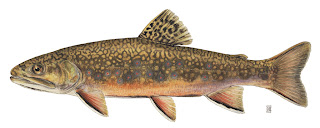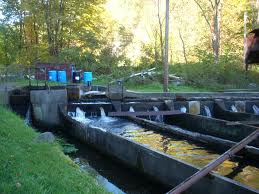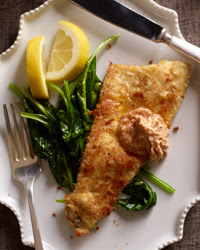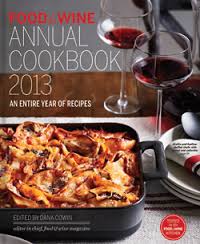 |
| Brook Trout |
I try to serve fish once a week. Its health benefits are well known and even its fat content is healthy—it comes in the form of Omega-3 fatty acids which not only protect your heart, they also raise your good cholesterol level. And almost nothing is as easy to cook in as little time as a piece of fish. I don’t know if you’ve noticed but salmon and tuna prices are hitting the roof—especially if you’re like me and prefer wild-caught fish. So you can imagine how pleased I was to discover that Trout is amazingly affordable. I bought a whole fish for $9.20, which the fishmonger filleted and skinned for me to give me the two beautiful filets I needed. I had to break my rule against farmed fish but I learned something about trout fish farming in the process.
 |
| A Trout Farm Raceway. Constantly moving water is essential for the health and growth of the fish. |
Considering that the Brook Trout is the state fish for eight states—Michigan, New Hampshire, New Jersey, New York, Pennsylvania, Vermont, Virginia and West Virginia—there must be a pretty steady supply in the East. It turns out that Idaho, whose state fish is the Cutthroat Trout, is responsible for 70 percent of trout farmed in the US. Trout Farming is the oldest form of commercial fish production in the world. It goes back 400 years in Europe and 150 years here. The good news is that the website www.seafoodchoices.comgives generally high marks to these farmed fish raised in fresh water ponds or raceways. There is concern, particularly in Idaho, over potential pollution in local waterways. Fortunately, the U.S. Environmental Protection Agency is charged with monitoring trout farming operations and states like Idaho have taken on this task on a state level. So I think its safe to give farmed brook trout a pass.
In their “Annual Cookbook 2013” (American Express Publishing 2013), the dish is called Trout Schnitzel. And although I have deep affection for a good Schnitzel, I wouldn’t call this one. The breadcrumbs used are made from Challah bread. Lately, virtually every recipe for Schnitzel has called for Panko. What separates this Japanese breadcrumb from the ones made with Challah is this: Panko is made from bread without crusts. The bread is coarsely ground into airy, large flakes that give Schnitzel a light, crunchy coating. Panko flakes tend to stay crispier longer than standard breadcrumbs because they don’t absorb as much grease. So I call this dish, not Trout Schnitzel but Sauteed Trout. The other change that I made to the original recipe was that instead of using anchovy filets in the Lemon-Chile Butter, I opted for anchovy paste. This simplifies making the butter without sacrificing any of the taste. I cut this recipe in half which eliminates having to cook the fish in shifts and having to use the oven at all. All in all, this is a perfect weeknight dinner. Here’s the recipe:
Preheat the oven to 325°.
Make the Lemon-Chile Butter:
In a bowl, blend the butter, anchovies, chile, shallot and lemon zest and season with salt and pepper. Set aside.
In a large, shallow bowl, beat the eggs. Put the bread crumbs in another large shallow bowl. Season the trout with salt and pepper and dip each fillet in the egg, letting the excess drip off. Dredge the trout in the bread crumbs, pressing to help them adhere.













Sounds delicious!
Thanks so much for your kind words. This really is one of those wonderfully simple entrees that delivers great taste in no time!